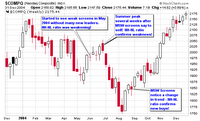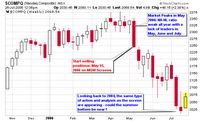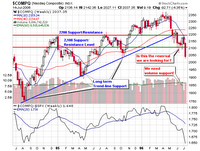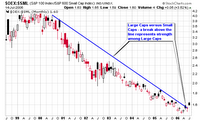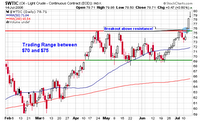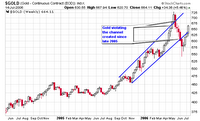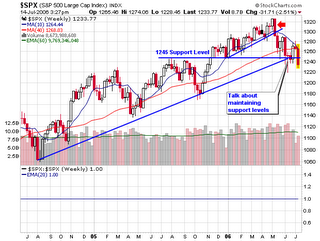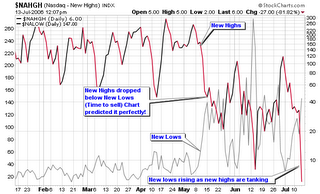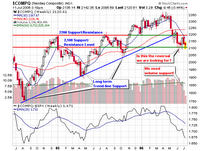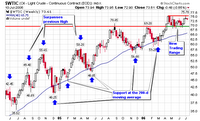Listen to Martin "Buzzy" Schwartz The Interview
 I found an interesting interview of Martin “Buzzy” Schwartz while searching the web last night. It is provided by a site named annonline.com and can be found through this address: The Interview
I found an interesting interview of Martin “Buzzy” Schwartz while searching the web last night. It is provided by a site named annonline.com and can be found through this address: The InterviewI mentioned that I read the book Pit Bull: Lessons from Wall Street's Champion Day Trader by Martin Schwartz over my last vacation and enjoyed it very much since it is very different than most stock market books. He tells his story and gives some advice at the same time but I viewed the read as entertaining and extremely insightful.
I enjoyed the interview even though I would have asked different questions so now I want to share it with you. First I will recap some important facts that I wrote down while listening:
I believe the interview took place in the summer of 1998 prior to the 2,000 point drop on the DOW in the fall of that same year. The October 1998 low near 7,300 pushed towards a record high just below 12,000 in January 2000.
He mentions that the DOW is trading near 9200 during the interview and says “I have trouble understanding how we can march unabated.”
The market is “selling at 5.3 times book value – record high…”
This great trader knows that things are not right and that the market is overdue for a correction but he specifically states that you must follow the trend and avoid picking a top. This is supreme emotional and psychological control by one of the best traders of our generation.
He is quoted as saying: “Don’t fight the trend despite the fact that we are at historical highs.”
Buzzy goes on to say “we are at the high end of the valuation spectrum” and “difficulty is that we can be hit with something from left field and we are overdue for that.”
As a trader and not an investor, he points out that the market was better suited for his style of trading during the 1980’s when it moved back and forth (taking advantage of the long and short side). He doesn’t like the constant push higher that everyone witnessed in the late 1990’s.
He talks briefly about his methods and says that he’s not in the business of giving advice and doesn’t feel comfortable giving advice to other traders. But, he mentions that he uses a 10 day exponential moving average with red light and green light signals (above the moving average is a positive green light and below is negative or a red light).
He uses his own type of money management with a risk parameter set in dollars. He will cut a trade when the dollar figure is violated.
Ann goes on to ask him if he ever breaks rules and as expected (we are all human), he says yes and blames it on emotions and stubbornness.
As many traders already know, the bulk of your profits are made on a minimum number of days throughout the year. Schwartz says: “200 days per year are about even. About 50 days per year is where my big money is made.”
Ann asks him what’s the most he has made in one day and he responds: “several million”. At one point in the early 1980’s, he was making $70,000 per day trading the S&P’s. In 2006, $70,000 a year is still considered a good salary!
Finally, he talks a bit about setting up a plan and putting it on paper before quitting your job and aspiring to become a full time trader. There’s more detail in the interview and in the book so I’ll let you find out for yourself.
He ends the interview by answering this question:
Ann: Can anyone do what you have done?
Martin: “Few can do what I have done” “rare set of skills and honesty, along with intelligence”
Publisher’s weekly describes the book as such:
After working several years in what he considered to be a dead-end job as a financial analyst at E.F. Hutton, Schwartz quit the firm, accumulated a nest egg of $100,000 and on August 13, 1979, bought a seat on the American Stock Exchange where he began trading stocks, options and futures. He quickly became an expert at trading S&P futures, and in his first full year as an independent trader made $600,000 and a year later earned $1.2 million. Schwartz's style was to get in and out of positions in a hurry; he rarely held on to any financial instrument for more than a day. As his success on Wall Street grew, he began his own fund in which he would manage other people's money as well as his own, a move he would regret. The stress of running the fund contributed to his developing pericarditis, which nearly killed him. His doctors advised him to slow down his lifestyle, so at the age of 48, Schwartz, along with his wife and two children, moved to Florida where he took up golf and developed a daily routine that allowed him to keep trading, but at a more relaxed pace. This is one of those rare autobiographies where the subject unintentionally portrays himself in an unfavorable light. As he grew ever richer, Schwartz became consumed with generating even more money and prestige so that he could "run with the top dogs." Inadvertently, he has written a cautionary tale on the dangers of being addicted to money and power.
Piranha




